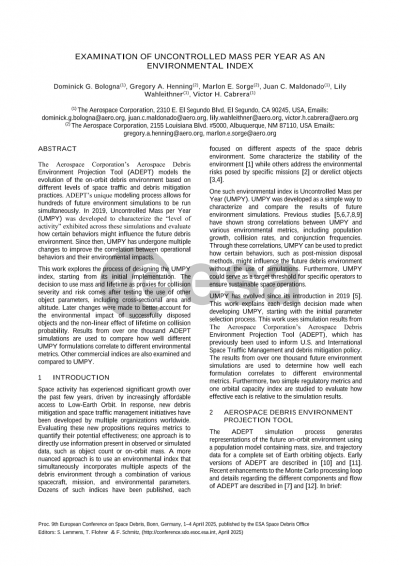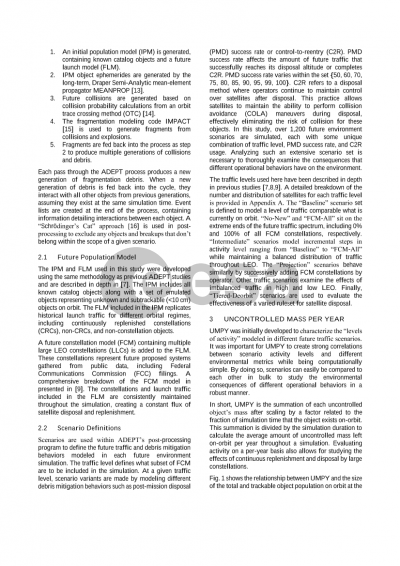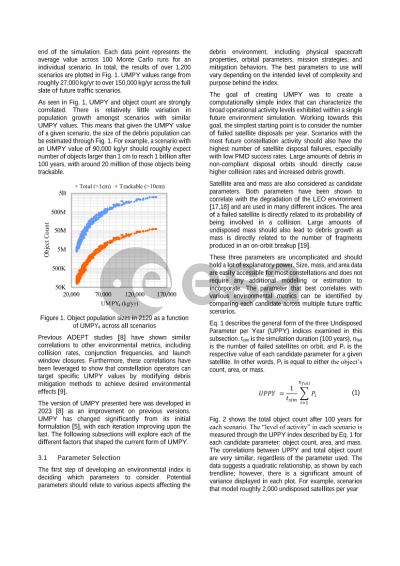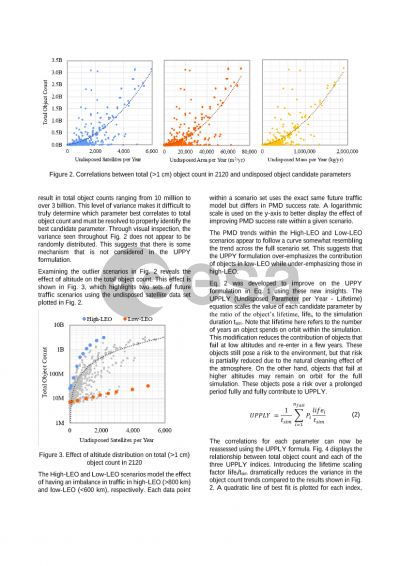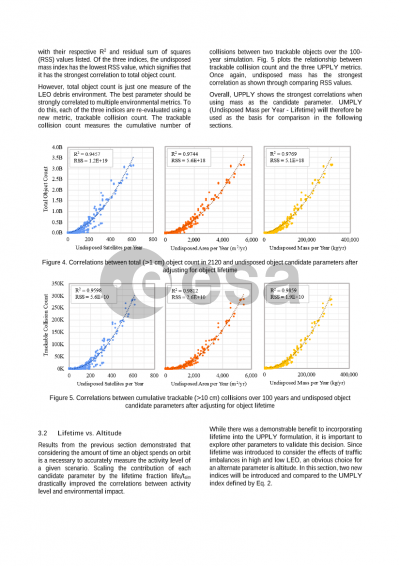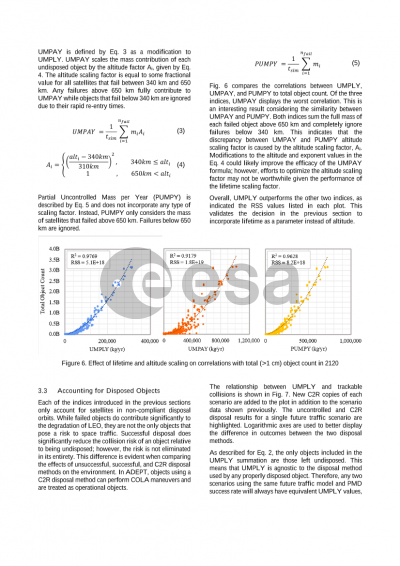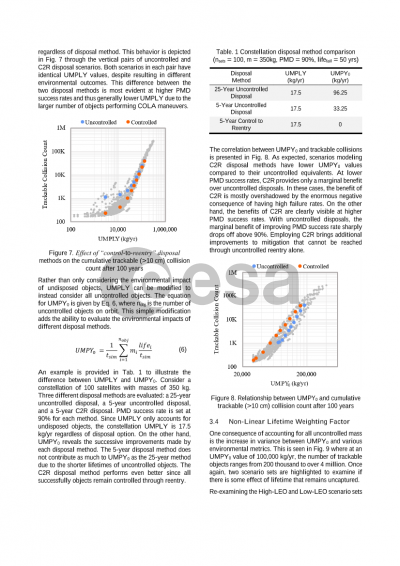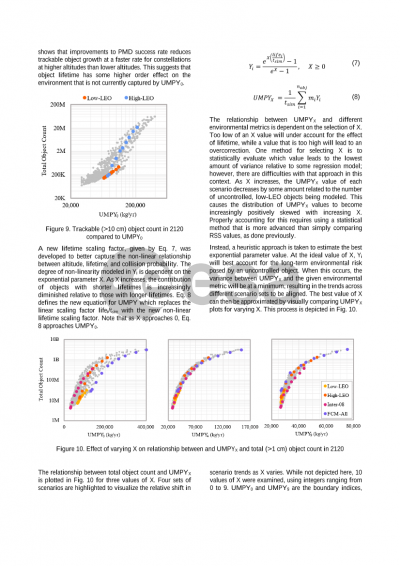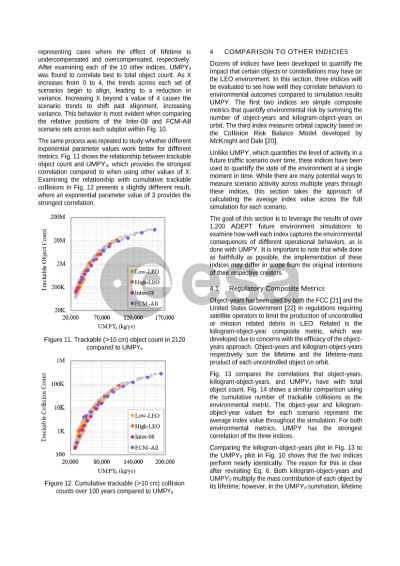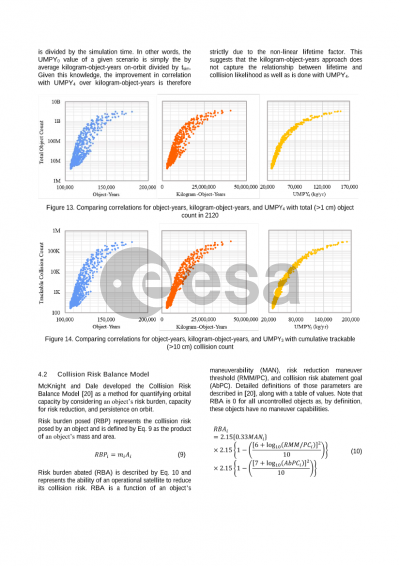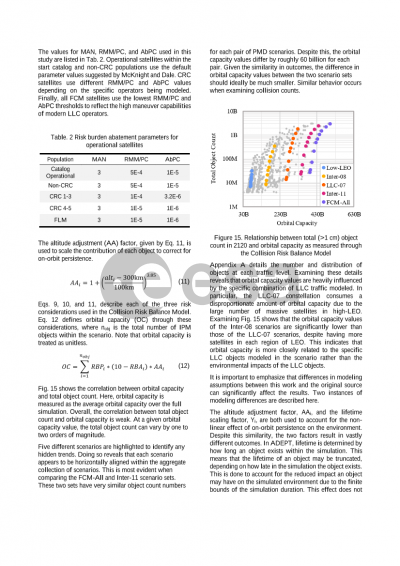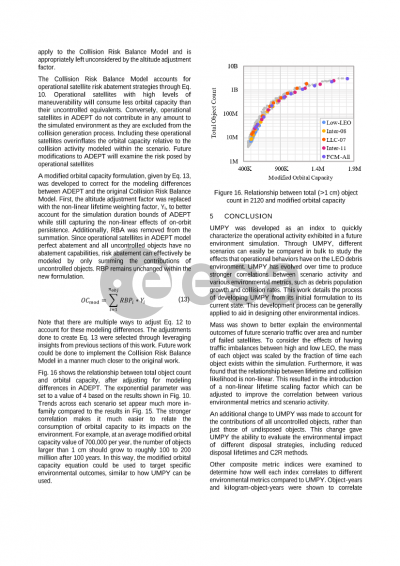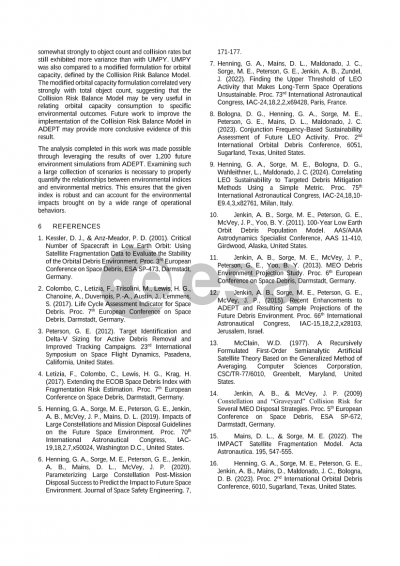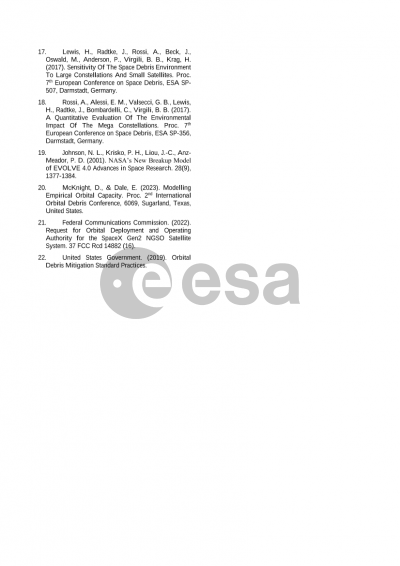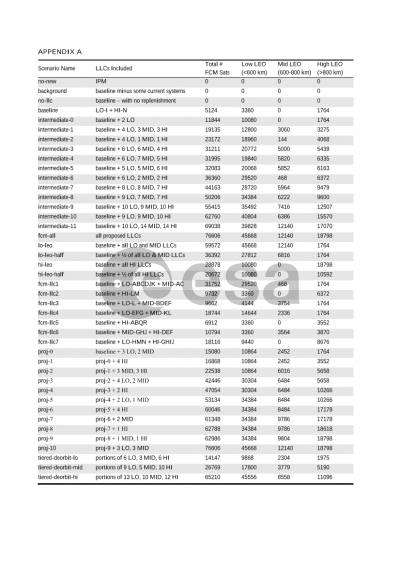Document details

Abstract
Space activity has grown significantly over the past few years, driven by increasingly affordable access to Low-Earth Orbit. In response, new debris mitigation and space traffic management initiatives have been developed by multiple organizations worldwide. Evaluating these new propositions requires metrics to quantify their potential effectiveness; one approach is to directly use information present in observed or simulated data, such as object count or on-orbit mass. Another more nuanced approach is to use an environmental index that simultaneously incorporates multiple aspects of the debris environment through a combination of various spacecraft, mission, and environmental parameters. Dozens of such indices have been published, each focused on different aspects of the space debris environment. Some characterize the overall health or stability of the environment, while others address the environmental risks posed by specific missions or derelict objects.
One such environmental index is uncontrolled mass per year (UMPY). First developed by The Aerospace Corporation in 2019, UMPY was created to characterize the “level of activity” exhibited across multiple simulations of the future on-orbit environment. UMPY is a type of risk index, where the lifetime and mass of each inactive object respectively serve as proxies for the probability and severity of a potential collision. Previous studies have shown strong correlations between UMPY and various environmental metrics, including object count, collision rates, and launch closures. Through these correlations, UMPY can be used to predict how certain behaviors, such as post-mission disposal methods, might influence the future debris environment without the use of simulations. Furthermore, UMPY could serve as a target threshold for specific operators to ensure sustainable space operations.
This work explores the process of designing the UMPY index, starting from its initial implementation. UMPY has evolved across multiple studies to better account for the environmental impact of successfully disposed objects and the non-linear effect of object lifetime on collision probability. Additionally, the decision to use mass and lifetime as proxies for severity and probability comes after testing the use of multiple other object parameters, including cross-sectional area and altitude. The relationship between different object parameters and environmental metrics are also analyzed to determine how using other parameters changes the efficacy of the UMPY formulation.
UMPY is studied using simulation results from The Aerospace Corporation’s Aerospace Debris Environment Projection Tool (ADEPT), which models the evolution of the future on-orbit debris environment based on different levels of space traffic and debris mitigation practices. Results from ADEPT analyses have been used to inform U.S. and international Space Traffic Management and debris mitigation policy. ADEPT’s unique process allows for hundreds of future environment simulations to be run simultaneously. This work takes advantage of ADEPT’s processing capabilities by using the results from over one thousand cases to show how multiple UMPY formulations and various space object parameters correlate to different environmental metrics.
Preview
